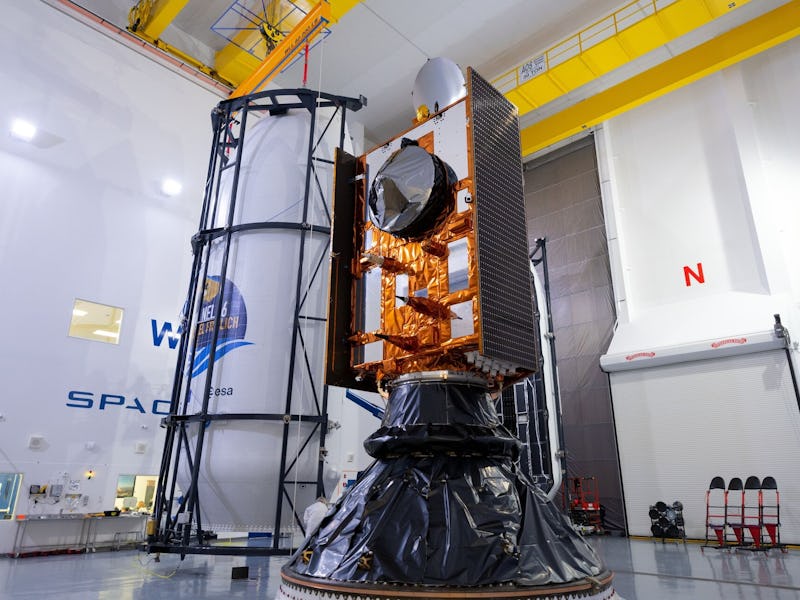Incredible images show NASA's Sentinel-6 is ready for lift off
The world's largest Earth observatory is now tucked away in its rocket fairing.

On November 21, the world's largest Earth observing satellite will lift off into space. There, observatory Copernicus Sentinel-6 will keep a watchful eye on our planet's dangerous rising sea levels.
But before it begins its mission, the Sentinel-6 Michael Freilich spacecraft needs to be prepped for its time floating through space. The satellite has been going through a series of testing, and now it has finally been tucked away in a giant cone, ready to be loaded onto the rocket that will carry it out into space.
This week, the European Space Agency released images showing the Sentinel-6 satellite in its final resting place before liftoff. The observatory is a joint venture between the agency and NASA. In the images, the spacecraft is shown sealed in its rocket fairing at the Vandenberg Air Force Base in California.
The team has been working to get the satellite ready for its final prep before launch, sealing it into its final resting place before loading it onto the rocket.
The satellite made its way to California earlier in September to undergo final testing. Now that it has been sealed off, the next and final step will be to roll the spacecraft out to the launch tower and fit it inside the Space X Falcon 9 rocket that will launch it into space.
Sentinel-6 is a joint mission by NASA and the European Space Agency, European Organization for the Exploitation of Meteorological Satellites, and the National Oceanic and Atmospheric Administration. The main purpose of the five and a half year mission is to collect data on global sea levels and chart climate change's effects on the Earth's oceans.
“As one of the most severe consequences of climate change, global sea levels are rising and putting millions of people at risk," Josef Aschbacher, ESA’s Director of Earth Observation Programme, said in a statement. "The Copernicus Sentinel-6 mission will take the lead in providing measurements of sea level so that rising trends can be monitored and key information can be supplied for important policy decisions."
The Copernicus Sentinel-6 mission includes two identical satellites, Sentinel-6 Michael Freilich and Sentinel-6B, which will launch five years apart and supply data to scientists until at least the year 2030.
The satellite sits inside the rocket fairing that will carry it to space.
Unlike previous Earth observation missions, the Sentinel-6 observatory will collect measurements at a much higher resolution and be able to measure smaller sea level variations near coastlines. The satellite will also provide near-realtime measurements of sea-surface height, significant-wave height, and wind speed. All of these can support ocean forecasting, crucial to sustainable ocean-resource management, coastal management, and environmental protection, as well as the fishing industry.
How does it work? — Sentinel-6's radar altimeter instrument calculates the distance between the satellite and Earth by measuring the time it takes for a transmitted radar pulse to reflect Earth’s surface. The returned echo pulse from the sea surface provides a waveform that is then processed to determine the height of the sea's surface and the wave height, as well as the surface wind speed from the roughness of the ocean.
The new Earth-observing satellites build on the heritage of ESA's Copernicus Sentinel-3 mission, which first launched in 2014 and remains the most ambitious Earth observation program to date.
The data provided by this mission fed numerous sea-level studies over the past 30 years, providing a unique perspective on the issue from space.
"Sentinel-6 Michael Freilich is a milestone for sea level measurements," Josh Willis, project scientist at NASA's Jet Propulsion Laboratory in Southern California, said in a statement.
"It's the first time we've been able to develop multiple satellites that span a complete decade, recognizing that climate change and rising seas are here to stay."
This article was originally published on